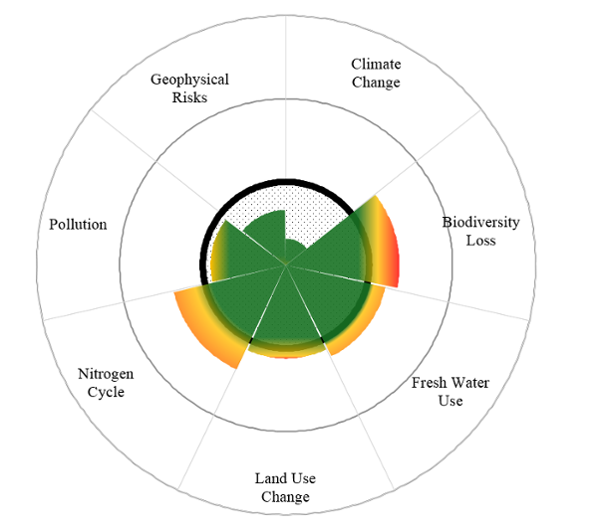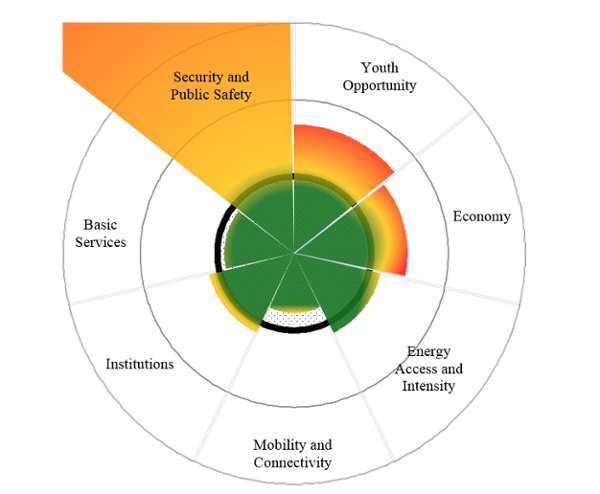Sao Paulo
Sao Paulo is prone to landslides, lightening and floods [1]. From 2005 to 2011, 35 casualties were reported in the City of Sao Paulo due to natural disasters and 37 people died annually due to the disasters between 2005 and 2011 in the State of Sao Paulo, leading to 0.09 deaths per 100,000 inhabitants. This is less than the global annual average of 9,655 natural disaster-related deaths between the years 2002 and 2011, according to a joint study by Université Catholique de Louvain and the World Health Organization (WHO) in 2012 [2]. Figure 1 and Table 1 compares Sao Paulo with global averages on the physical science indicators.

Figure 1: Physical Science: Sao Paulo vs. Global Condition
Although Sao Paulo has relatively high service levels in areas such as mobility and connectivity, as well as basic services, which is demonstrated in Figure 2 and Table 2, the city has low youth opportunity and per capita economy.
Although Sao Paulo has relatively high service levels in areas such as mobility and connectivity, as well as basic services, which is demonstrated in Figure 2 and Table 2, the city has low youth opportunity and per capita economy.

Figure 2: Socio-economic: Sao Paulo vs. Global Condition
References
[1] Irineu de Brito Jr, Bruno César Kawasaki, Adriana Leiras, and Hugo Tsugunobu Yoshida Yoshizaki, 2011, "The Profile of the Population Affected by Natural Disasters in Brazil," eds., Chicago, pp. 025-1388.
[2] Debarati Guha-Sapir, Philippe Hoyois, and Regina Below, 2013, Annual Disaster Statistical Review 2012: The Numbers and Trends, Université catholique de Louvain-Wolrd Health Organization.